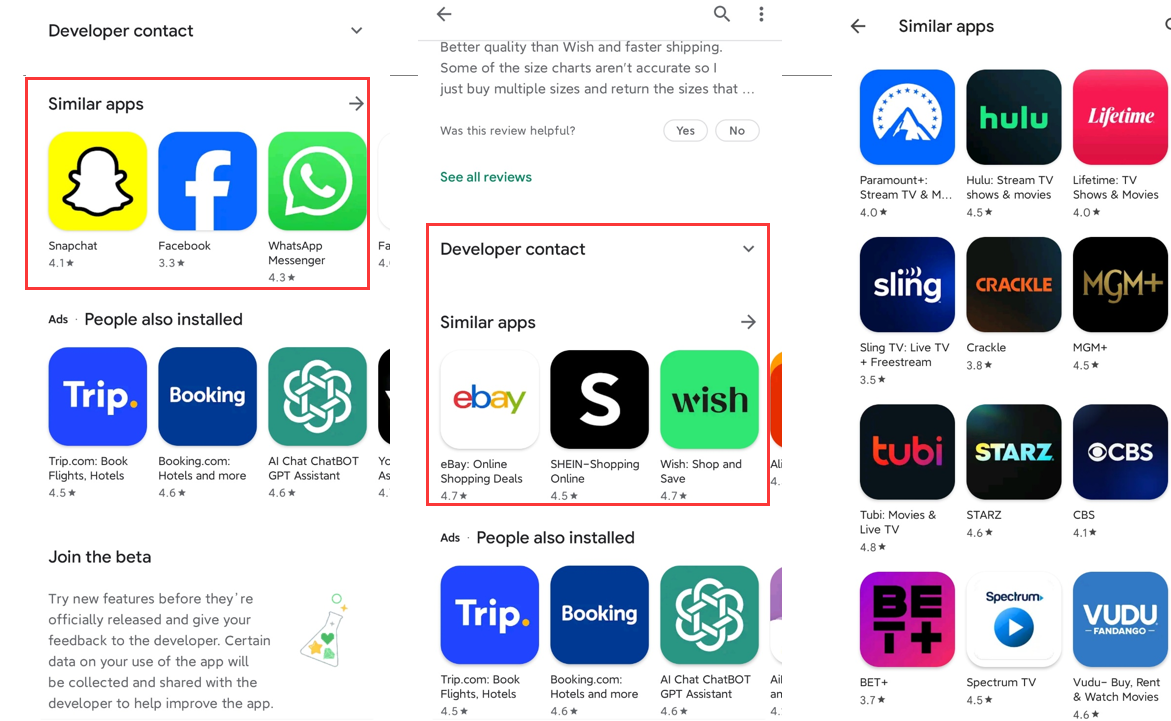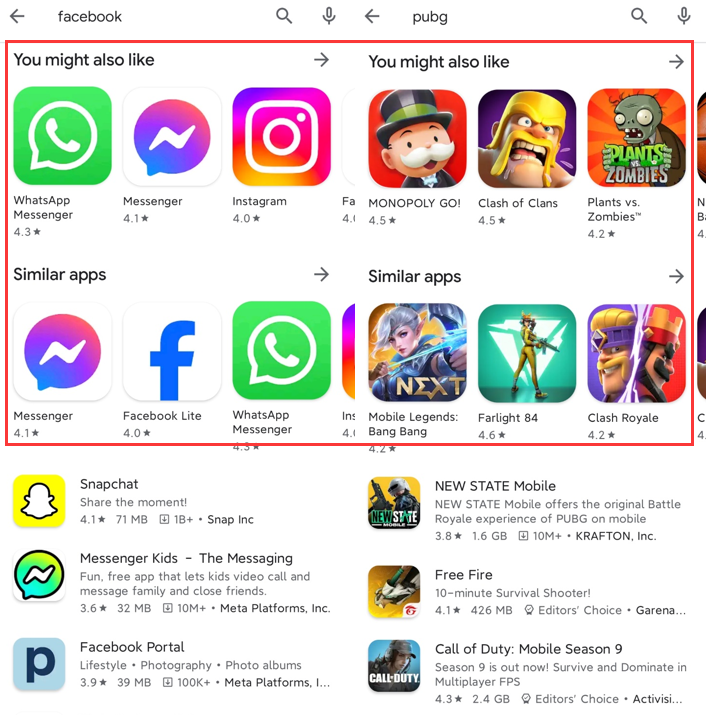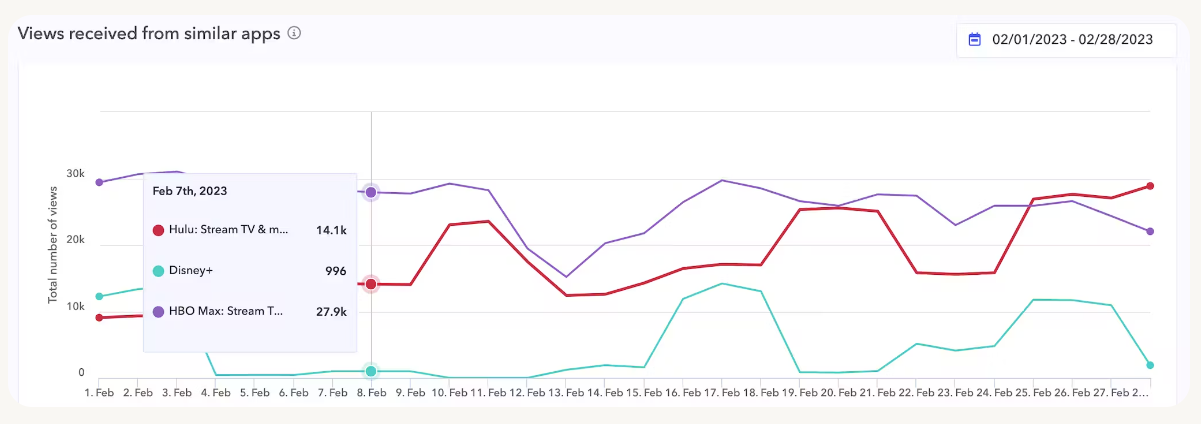Boost Downloads with “Similar Apps” on Google Play!
Hey there, ASO enthusiasts! Typically, we focus on two main metrics: visibility and conversion rate.
Why? Because visibility x conversion rate = users.
While there are numerous strategies to enhance visibility, such as keyword optimization and adding promotional content, today we’ll delve into a potentially overlooked topic: “Similar Apps” recommendations on the Google Play Store.
In this article, you’ll get insights on:
- Where do “Similar Apps” appear on the Play Store?
- What are the benefits of being featured in “Similar Apps”?
- How does Google Play Store decide which apps to recommend as similar?
- How to increase the chances of your app or game appearing in “Similar Apps”?
- How to know if your app has been featured in “Similar Apps”?
Contents
- Where Do “Similar Apps” Appear On the Play Store?
- Benefits of Being Featured in “Similar Apps”
- How Does Google Play Store Determine “Similar App” Recommendations?
- How Can I Boost My App or Game’s Chances of Appearing in “Similar Apps”?
- How Can I Know If My App Is Recommended in “Similar Apps”?
- In Conclusion
Where Do “Similar Apps” Appear On the Play Store?
In the Google Play Store, “Similar Apps” typically appear in the following places:
1. App Details Page: When you click on an app to view its details and scroll down past the description, developer info, and user reviews, you’ll often find a section labeled “Similar Apps” or “You Might Also Like”, showcasing apps related to the one you’re viewing.

2. Search Results: When you search for a specific app or keyword, in addition to directly relevant results, you might also see apps that are similar to your search query.

3. Post Download/Installation: After downloading or installing an app, the Play Store may sometimes suggest similar apps, hinting that you might be interested in them.
4. Main Page & Featured Sections: Although recommendations on the main page and other feature sections are based on various factors, not just similarity, you might still encounter apps recommended based on your usage patterns and preferences.
Benefits of Being Featured in “Similar Apps”
Being featured in the “Similar Apps” section of the Google Play Store can significantly impact an app’s visibility and download numbers. Here’s why it’s advantageous:
- Increased Visibility: Being in the “Similar Apps” section boosts your app’s exposure in the store, making it more likely for users to see and download it.
- Higher Quality Traffic: Users exploring or downloading a certain app might be intrigued by similar apps. As they already show interest in a particular theme or feature, they’re more likely to download and engage with your app for longer periods.
- Improved Conversion Rates: Since “Similar Apps” showcase apps akin to what users are currently browsing or have downloaded, these users are more inclined to show interest, leading to higher installation rates.
- Enhanced User Retention: Users sourced from “Similar Apps” often already have a grasp of what the app offers, making them more likely to become long-term, loyal users.
- Discover New Competitors: Observing which apps are frequently recommended alongside yours provides valuable insights into market trends and competitors, helping you strategize more effectively. This feature can be particularly handy for identifying the most relevant competitors in various countries or regions.
How Does Google Play Store Determine “Similar App” Recommendations?
The Google Play Store employs a variety of data and algorithms to suggest “Similar Apps”. While Google hasn’t publicly disclosed the specifics of its recommendation algorithm, based on external observations and common practices in recommendation systems, we can speculate the following:
- App Metadata: Factors like an app’s category, tags, description, and permissions can be utilized to judge its similarity to other apps. Google might analyze the textual content in the app’s description and related info to identify similar keywords and themes.
- Developer Information: Other apps from the same developer or team might also be considered similar.
- User Behavior Analysis: Google might offer similar app suggestions based on users’ interactions with certain apps. Actions like downloads, installations, usage patterns, and uninstallations might be taken into account. For instance, if many users download both App A and App B, these two might be perceived as similar.
- Collaborative Filtering: A common technique in recommendation systems where items are suggested based on user behavior patterns. For example, if Users A, B, and C all like App X, and A and B also like App Y, App Y might be recommended to User C when they browse App X.
- Install Base: Popular apps might frequently appear in similar app suggestions.
- User Reviews and Ratings: Similarities might be drawn from the reviews and ratings apps receive. If two apps are highly rated by a similar user group, they might be viewed as similar.
How Can I Boost My App or Game’s Chances of Appearing in “Similar Apps”?
To enhance the likelihood of your app or game appearing in the “Similar Apps” section, consider employing a series of ASO (App Store Optimization) strategies. Here are some friendly suggestions to boost your app or game’s visibility and relevance in the Google Play Store:
- Keyword Optimization: Ensure your app’s title, description, and keywords align with other apps you’d like to be associated with. Conduct keyword research to identify popular keywords related to your app’s features, themes, and characteristics, and use them effectively.
- App Categories and Tags: Make sure your app or game is correctly categorized and uses the most relevant tags. This can increase its similarity with other apps within the same category or tag.
- High-Quality App: Ensure your app offers top-notch quality, an excellent user experience, and is free of glaring bugs. Positive ratings and good user reviews can enhance its chances of being featured in “Similar Apps”.
- Increase Downloads and Active Users: Promote your app to boost its downloads and active user base. This not only helps in ranking higher in store search results but might also influence “Similar Apps” recommendations.
- User-Oriented Promotions: Target promotions at user groups that show interest in features or themes similar to your app or game. If these users often download other apps similar to yours, it might boost your chances in “Similar Apps”.
- Localization Focus: If your app or game is available in multiple countries or regions, ensure all content is adequately localized, including text, images, and cultural references. This can improve its recommendation rate in “Similar Apps” across various regions.
How Can I Know If My App Is Recommended in “Similar Apps”?
The Google Play Console doesn’t directly show us how many times our app gets featured in the “Similar Apps” section. However, you can glean some insights through the following methods and strategies:
- Traffic Source Analysis: In the Google Play Console, you can check the Acquisition Report of your app, which displays traffic from various sources. If you notice an uptick in traffic from “Google Play Browse”, this might suggest your app is being recommended in the “Similar Apps” section or on other app pages.
- Competitor Monitoring: Manually check popular apps that are similar to yours. Look into their “Similar Apps” section on their app page to see if your app appears there.
- Using Third-party ASO Tools: AppTweak offers insights on “Similar Apps” data. To estimate the impact of being in “Similar Apps” or “You might also like” recommendations, AppTweak has a unique metric: Browse Visibility. This KPI gauges the number of views an app might get from appearing in a competitor’s “Similar Apps” recommendations. That said, from a personal perspective, AppTweak might be on the pricier side for smaller or independent developers. It’s probably better suited for medium to large-scale companies.

While these three methods may not give you an exact confirmation of your app’s presence in the “Similar Apps” section, they do offer valuable hints about how your app is discovered.
In Conclusion
Has the “Similar Apps” feature in the Google Play Store sparked a new idea for organic growth for you? If so, why not dive into the hidden treasure of traffic by exploring the strategies and tips discussed above? Happy app optimizing!
